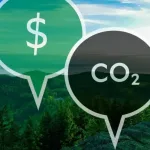Carbon Credits: Paving the Way for a Greener Future

eyesonindonesia
1. The Emergence of a Global Carbon Exchange
In a world grappling with climate change, carbon credits have emerged as a powerful tool. Singapore, a hub for financial innovation, is at the forefront of this movement. The Singapore Exchange (SGX) has taken a bold step by launching Climate Impact X (CIX), a global carbon exchange and marketplace. Backed by banks DBS and Standard Chartered, along with state investor Temasek Holdings, CIX aims to scale the voluntary carbon market and offer solutions to combat climate change1.

2. The Voluntary Carbon Market: A Catalyst for Change
While the carbon credit market is still relatively small, the voluntary carbon market holds immense potential. As companies worldwide adopt “net zero” targets, they seek ways to offset their emissions. Carbon credits allow buyers to pay other companies for actions that reduce greenhouse gas emissions. These credits serve as a bridge between environmental responsibility and business sustainability. By participating in this market, companies can drive billions of dollars into climate solutions over the next decade2.
3. Quality Matters: Navigating the Carbon Credit Landscape
Not all carbon credits are equal. Leaders must understand the nuances to make informed choices. Here are key considerations:
- Types of Credits: Some credits are tied to specific projects (like reforestation), while others are more generic. Nature-based credits, such as those from forest conservation, are gaining prominence.
- Reputational Risk: High-quality credits adhere to rigorous standards and are transparent. Leaders should prioritize credits that align with their values and minimize reputational risk.
- Regulation and Standards: Understanding the regulatory landscape and industry standards is crucial. Companies should engage with reputable organizations and stay informed about evolving guidelines2.

4. The Road Ahead: Catalyzing Global Sustainability
As the voluntary carbon market grows, leaders have a unique opportunity to drive change. By participating in carbon credit trading, companies not only offset emissions but also contribute to Sustainable Development Goals (SDGs). The intersection of business and environmental stewardship is where innovation thrives. Let us embrace this journey toward a greener, more sustainable future.
Conclusion: Our Collective Impact
Singapore’s commitment to carbon credits through CIX sets a precedent. As leaders, we hold the power to shape our planet’s destiny. Let us invest in carbon credits, not just as a financial instrument, but as a beacon of hope. Together, we can turn the tide and create a legacy of environmental resilience for generations to come3.









